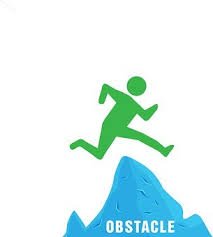DISASTER MANAGEMENT AND PREPAREDNESS

DISASTER MANAGEMENT AND PREPAREDNESS
Why should Disaster Management be taught? Is the prospect of Disaster Management increasing ? What is the role of DISASTER MANAGEMENT? Is it really very useful?
There are thousands of questions which pop-up in your minds when you talk about this subject.
The biggest question is, can a disaster be managed?
If yes, then of course it’s an important subject but what if no ?
Let’s understand what this subject is all about and how can it play an important role in our lives.
Looking for project on Tsunami. Get the complete project here https://shapingminds.in/project-on-tsunami/
WHAT IS DISASTER MANAGEMENT?
A disaster disrupts the normal functioning of a country or society.
Therefore, it refers to manage both – the risks and the after effects.
In simple words, it means to manage and conserve lives and property.
It teaches us about the prompt action at the time of calamity.
Read about 7 most frequently asked questions on International Date Line
WHAT IS THE AIM OF DISASTER MANAGEMENT ?
Aim of this subject is more than just response and relief.
It works to reduce the losses from hazards.
Assures in time assistance to victims and achieve rapid and quick recovery.
WHEN WAS IT INTRODUCED IN INDIA ?
India is prone to various kinds of hazards due to it’s unique geographical location.
After the severe earthquake in Gujarat in 2001, the Government of India decided to introduce Disaster management.
It was first introduced in Social science book of class VIII in 2003.
Today it is being taught at 10+2 level and in colleges.
WHY IT IS NECESSARY FOR EVERY INDIAN CITIZEN?
India has seen more than 450 major disasters in a span of just thirty years https://ndma.gov.in/en/vulnerability-profile.html
This has resulted into huge loss to life & property.
Therefore, India as a nation is strongly preparing itself to incorporate the culture of timely preparedness.
Through awareness on disaster in schools, children can play a major role in reducing the impact of disaster.
CAN DISASTERS BE MANAGED ?
Disaster is an accident which can take place anywhere and anytime.
With extra alertness and awareness, the impact of disaster can be reduced. You can keep yourself and your family safe.
Following safety tips can make the difference in an emergency.
For example, keeping two gas cylinders in the kitchen can be dangerous.
WHAT ARE THE DIFFERENT TYPES OF DISASTERS:
There are mainly two types of disasters – natural and man-made.
Natural disaster includes cyclones, earthquakes, volcanoes, flood, Tsunami, Lightening http://www.walkthroughindia.com/lifestyle/top-14-worst-and-major-natural-disasters-of-india/ etc.
Man-made disasters are transport accidents, fire, industrial accidents, stampedes, terrorist attack, explosions etc.
IS IT ENOUGH TO TEACH DISASTER MANAGEMENT:
It’s a good step but not enough to cope up with any disaster. By reading about the disasters, disaster cannot be managed. Disaster management is a practical oriented subject. Reading theory or scoring full marks in exams does not guarantee your safety. Most of the Indian schools simply give a project to students on disaster management.
Your mind need to understand and should be ready enough for prompt and immediate action. Three years back when there was an earthquake in Nepal and Bihar border, I was in a village school. When the earthquake came, child sitting in the first bench complained that the boy sitting back to him is shaking his bench and causing disturbance. Though the benches were shaking due to earthquake.
DISASTER PREPAREDNESS: WHAT EVERY INDIAN MUST KNOW:
- More than 56 % of the landmass ( Himalayan mountain range and Gujarat ) is prone to earthquakes.
- Northern and eastern plains are vulnerable to floods.
- Eastern coastal areas are susceptible to cyclones and Tsunami.
- Interior parts of the country is prone to drought.
- During summer, Delhi to Bihar belt is prone to heatstroke (Loo)
THE ROLE OF NATIONAL INSTITUTE OF DISASTER MANAGEMENT (NIDM):
Constituted under the Disaster Management Act 2005.
Objective is to promote and propagate scientific and rational outlook.
Entrusted with the major responsibility for human resource development, capacity building, training and research.
Acts as a think tank for the Government in policy formulation.
Works ferociously towards making a disaster free India at all levels.
DISASTER PREPAREDNESS:
AT HOME:
The three magic words are prepare, plan and practice. Analyse possible disasters. Keep emergency numbers, make everyone aware about the plan and its execution. Protect family members and your valuable items. Get insured.
AT WORK PLACE:
Check for emergency plans and it’s execution, communicate with the authorities, keep helpline numbers and contact numbers of local people, prepare a team of few active people.
OUTDOOR PLANS:
Outdoor plans are necessary in case of accidents, fatigue, high or low blood pressure, theft, kidnapping, riots etc. Disaster can take place anywhere but your preparedness can reduce the risk. Always keep emergency numbers on your mobile. Also keep symbolic messages and keep informed to few people about that symbol, keep medicines which you take regularly and do not panic. Always inform one or two people whenever you are going out.
COMMON MISTAKES COMMITTED DURING DISASTER: DO’S AND DONT’S
1 GAS CYLINDER LEAKAGE AT NIGHT:
Switching on lights to check the leakage.
Never switch on or off any electrical switches because it creates a spark and can catch fire. Instead use a mobile phone or torch and open doors and windows.
2 SNAKE BITE:
Taking the person straight to the hospital.
Have the person lie down with wound below the heart, tie a piece of cloth slightly away from the wound to reduce blood circulation before taking him to a doctor.
3. DROWNING:
Jumping and Diving in water.
Don’t go, try to reach or throw a rope, cloth or anything which a person can hold and can be pulled.
4. CHOKING (IN CASE OF SMALL BABIES):
Turning the baby upside down and hold them by their feet or trying to give water to drink.
Lie the baby in upside down position. Use your thigh for support. Hit five to six times with your hand between the shoulders.Blow with your hands must be quick and strong to create vibrations. pressure and vibrations will throw the object out.
5. SHORT CIRCUIT:
Throwing water to extinguish the fire.
Do not touch the electrical equipment or main switch board.
Call fire brigade and remove gas cylinder, perfume bottles, nail polish remover, shoe polish, sanitizer, clothes etc which can easily catch fire.
6. HEAT STROKE (LOO):
Surrounding the patient and not allowing proper air circulation.
Immediately move the person in shade, remove excess clothing, cool him/her with wet wet cloth.
7. BONE FRACTURE:
Try to diagnose or make the broken part straight.
Cool the affected area with an ice pack and help the patient lie in a comfortable position.
THE FOLLOWING LINKS MAY BE HELPFUL TO CLASS IX STUDENTS:
Disaster Management Project for Class 9 – Complete Guide
Project On Tsunami: 13 Pages You Must Include In Your Disaster Management Project
11 Points To Include In Your Industrial Disaster Management Project
IF YOU LIKE THIS ARTICLE, PLEASE SUBSCRIBE AND SHARE.
IF YOU HAVE ANY QUESTIONS, FEEL FREE TO WRITE IN THE CONTACT FORM GIVEN BELOW.




0 Comments